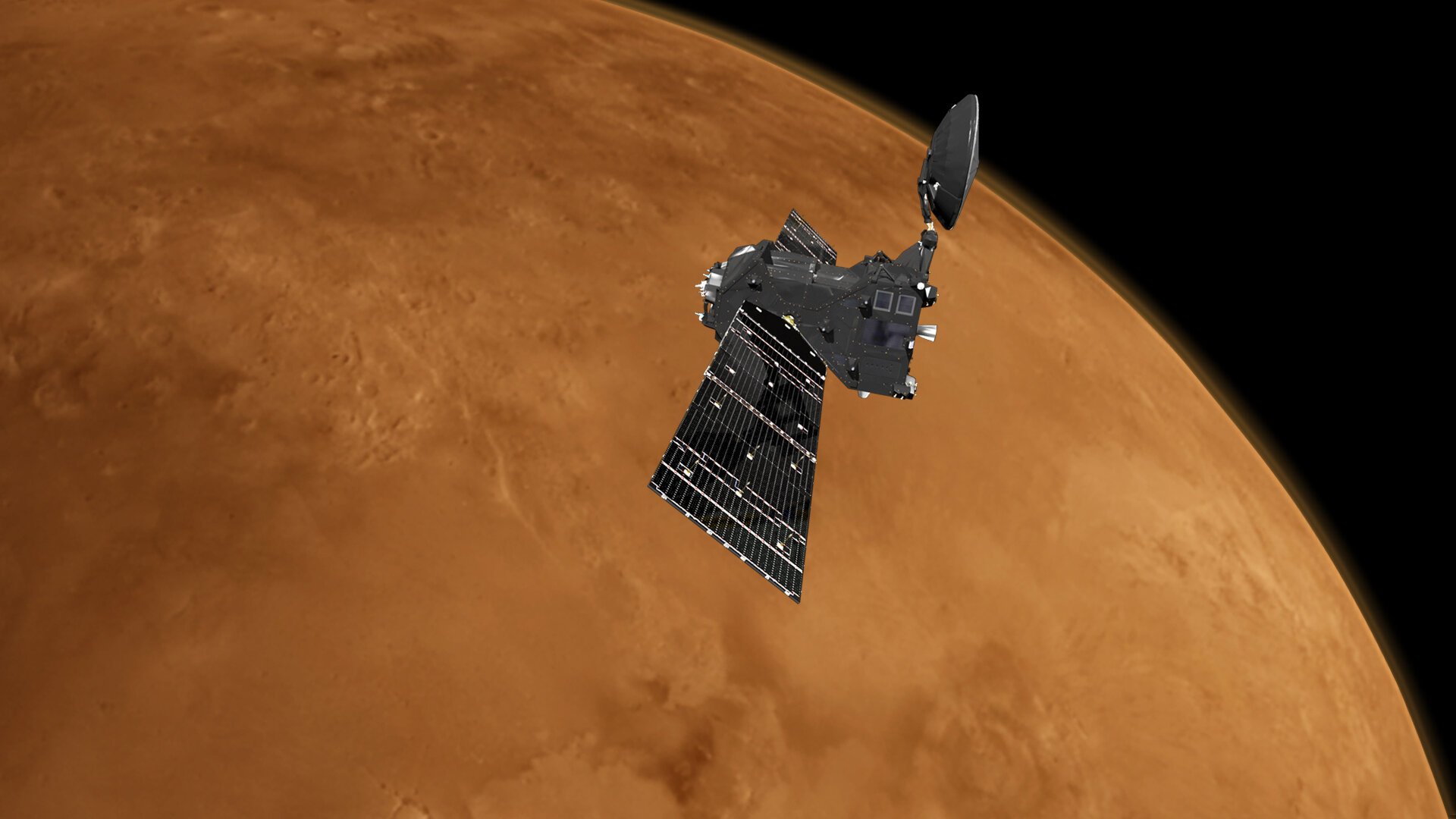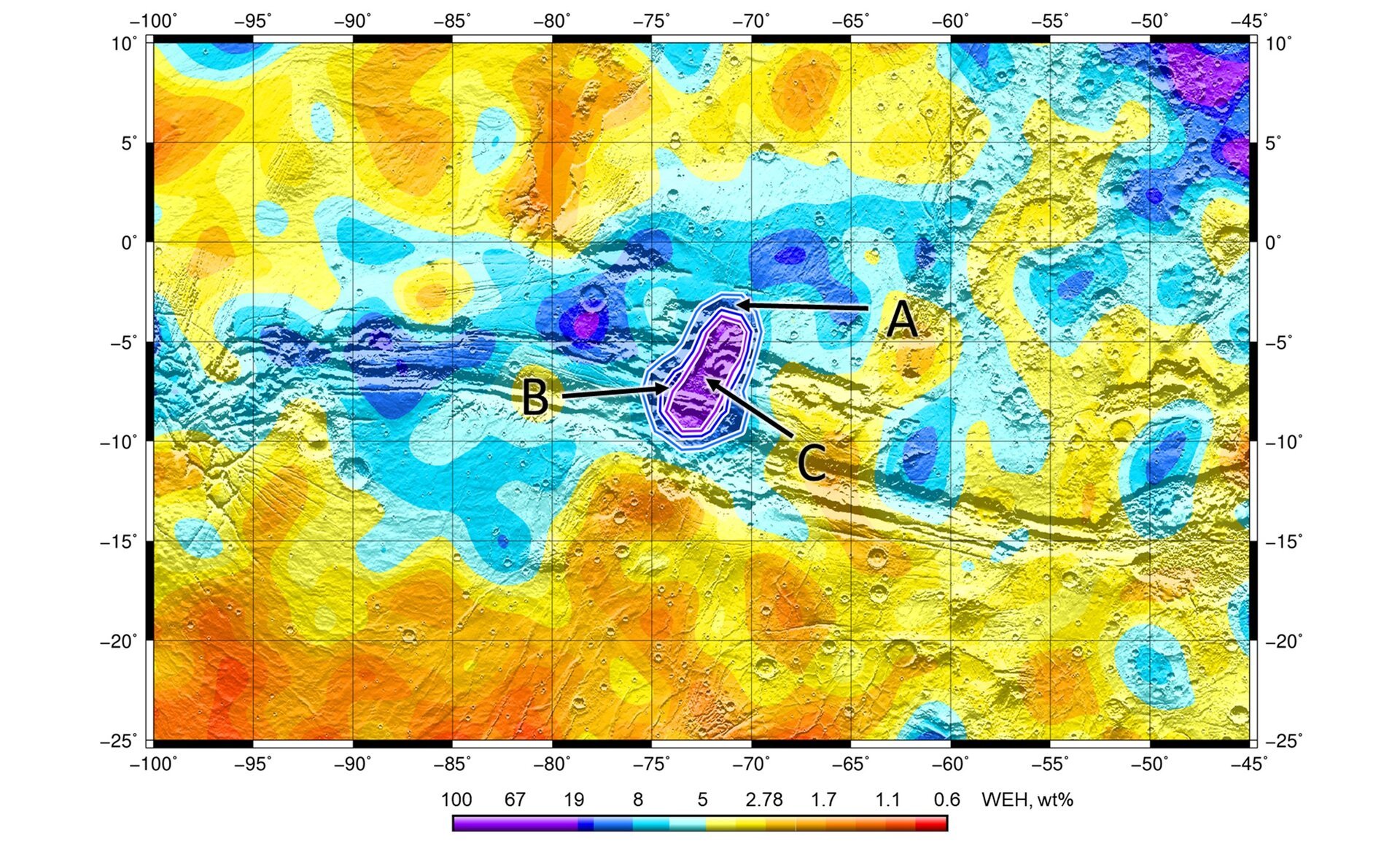
Researchers have long suspected that Mars was once home to several rivers, lakes, and perhaps even oceans. But while they have been able to detect ice, and some salty lakes, in the planet's polar regions, finding water in other areas has proved elusive. Now, scientists have finally found evidence of a large water reservoir just a few feet below the surface of the Red Planet's Valles Marineris canyon system.
Located along the equator of Mars, the Valles Marineris is one of the Solar System's largest canyons. The massive tectonic chasm measures over 2,500 miles (4,023 kilometers) long and 5 miles (8 km) deep. NASA estimates that if the Valles Marineris were on Earth, it would stretch across the continental United States — all the way from New York to California.

"We found a central part of Valles Marineris to be packed full of water — far more water than we expected," said study co-author Alexey Malakhov, a scientist at the Space Research Institute of the Russian Academy of Sciences. "This is very much like Earth's permafrost regions, where water ice permanently persists under dry soil because of the constant low temperatures."
The discovery was made using data collected by the ExoMars Trace Gas Orbiter (TGO), which has been circling the Red Planet since 2018. TGO, a collaboration between the European Space Agency (ESA) and the Russian Federal Space Agency (Roscosmos), is designed to detect the presence of gases such as methane and water vapor in the Martian atmosphere. The researchers say that between May 2018 to February 2021, the orbiter's Fine Resolution Epithermal Neutron Detector (FREND) found an unusually large amount of hydrogen — a measure of water content – in the '

The scientists, who revealed their findings in a press statement on December 15, 2021, suspect the water is in the form of ice. If true, it could make up as much as 40 percent of the area's near-surface material. However, FREND could also be detecting water that is chemically bound to minerals in the soil. The team plans to analyze more data to determine the water's form. Regardless of the outcome, they believe the discovery is a game-changer for potential human missions to the Red Planet.
"Knowing more about how and where water exists on present-day Mars is essential to understand what happened to Mars' once-abundant water, and helps our search for habitable environments, possible signs of past life, and organic materials from Mars' earliest days," says Colin Wilson, ESA's TGO project scientist.
Resources: www.esa.in, Live Science.com
